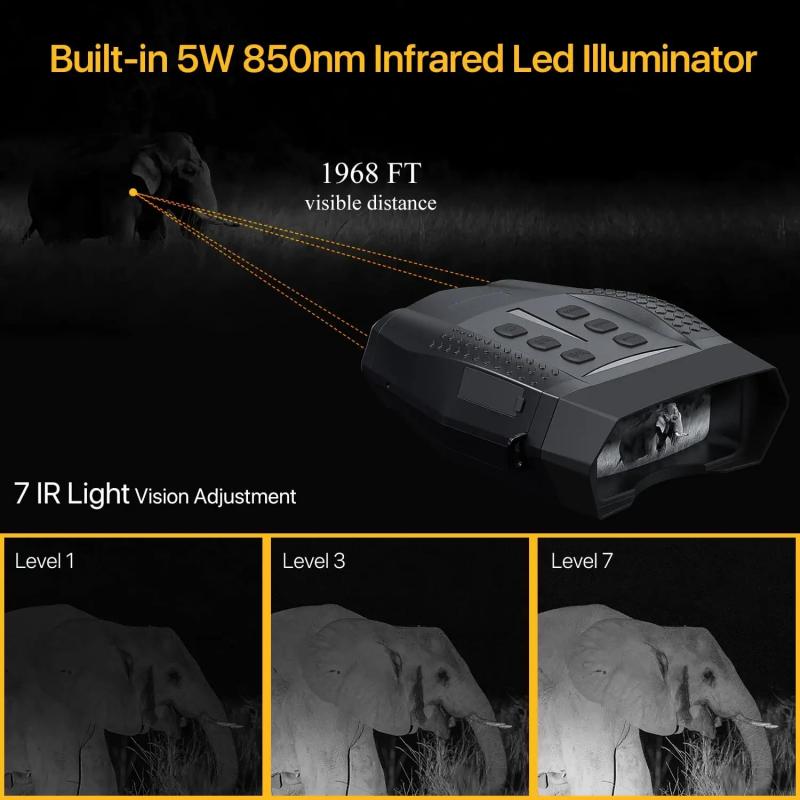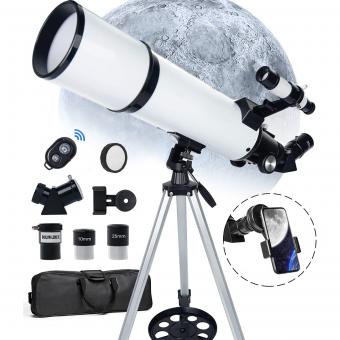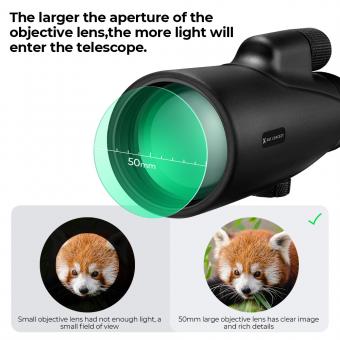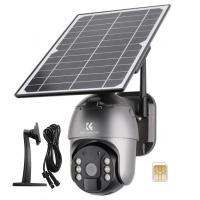What Can You See Through Telescope ?
Through a telescope, you can see various celestial objects such as stars, planets, galaxies, nebulae, and even the Moon in greater detail. Telescopes allow us to observe objects that are located far away in space and are not visible to the naked eye. By collecting and focusing light, telescopes enhance our ability to study and understand the universe. They reveal intricate details of distant objects, such as the rings of Saturn, the craters on the Moon, the moons of Jupiter, and the colorful clouds of gas in nebulae. Telescopes also enable astronomers to discover new celestial bodies, study their properties, and unravel the mysteries of the cosmos.
1、 Celestial bodies: Stars, planets, moons, and other astronomical objects.
Through a telescope, one can observe a wide range of celestial bodies, including stars, planets, moons, and other astronomical objects. Stars are perhaps the most common objects observed through telescopes. They appear as tiny points of light, but with the help of telescopes, their colors, brightness, and even their distance from Earth can be determined. Telescopes also allow astronomers to study the life cycle of stars, from their formation to their eventual death as supernovae or the formation of black holes.
Planets within our solar system are another fascinating subject of observation through telescopes. With the aid of telescopes, we can observe the different features of planets such as Jupiter's Great Red Spot or Saturn's rings. Telescopes also enable us to study the atmospheres of these planets, providing valuable insights into their composition and weather patterns.
Moons, both natural and artificial, can also be observed through telescopes. Our own Moon, with its craters and mountains, is a popular target for amateur astronomers. Additionally, telescopes allow us to observe the moons of other planets, such as Jupiter's four largest moons, known as the Galilean moons.
Telescopes also provide a glimpse into the vastness of our universe by allowing us to observe distant galaxies, nebulae, and clusters of stars. These objects can reveal valuable information about the formation and evolution of galaxies, as well as the distribution of matter in the universe.
In recent years, telescopes have played a crucial role in the discovery and study of exoplanets, planets that orbit stars outside our solar system. By observing the slight dimming of a star's light as a planet passes in front of it, telescopes have helped identify thousands of exoplanets, expanding our understanding of planetary systems beyond our own.
In conclusion, telescopes offer a window into the wonders of the universe. From stars and planets to galaxies and exoplanets, these powerful instruments allow us to explore and unravel the mysteries of the cosmos.

2、 Deep space objects: Nebulae, galaxies, and star clusters.
Through a telescope, one can observe a wide range of celestial objects in deep space. These include nebulae, galaxies, and star clusters. Nebulae are vast clouds of gas and dust that can be seen as glowing or dark patches in the night sky. They come in various shapes and sizes, such as the famous Orion Nebula or the colorful Helix Nebula. Galaxies, on the other hand, are massive collections of stars, gas, and dust held together by gravity. They can appear as spiral, elliptical, or irregular shapes. The Andromeda Galaxy, our closest galactic neighbor, is a popular target for amateur astronomers.
Star clusters are groups of stars that are gravitationally bound and often formed from the same molecular cloud. They can be classified as open or globular clusters. Open clusters, like the Pleiades, are relatively young and contain a few hundred to a few thousand stars. Globular clusters, such as Omega Centauri, are much older and can contain hundreds of thousands or even millions of stars tightly packed together.
Advancements in telescope technology have allowed astronomers to explore deep space objects in greater detail. For instance, the Hubble Space Telescope has captured breathtaking images of distant galaxies, revealing their intricate structures and providing insights into the early universe. Additionally, ground-based telescopes equipped with adaptive optics can compensate for atmospheric distortions, enabling clearer views of nebulae and star clusters.
In recent years, telescopes have also been used to study exoplanets, planets that orbit stars outside our solar system. By observing the slight dimming of a star's light as a planet passes in front of it, astronomers can gather information about the planet's size, orbit, and even its atmosphere.
Overall, telescopes offer a window into the vastness of deep space, allowing us to marvel at the beauty and complexity of nebulae, galaxies, star clusters, and even distant planets.

3、 Solar system features: Craters, mountains, and valleys on the Moon.
Through a telescope, one can observe various features of the Solar System, including craters, mountains, and valleys on the Moon. The Moon, Earth's natural satellite, is a fascinating celestial body that has been extensively studied and observed. When looking at the Moon through a telescope, one can see a multitude of craters, which are formed by the impact of meteoroids over millions of years. These craters come in various sizes and shapes, ranging from small, shallow ones to large, deep ones. Some of the most famous lunar craters visible through a telescope include Tycho, Copernicus, and Plato.
In addition to craters, telescopes also reveal the presence of mountains on the Moon. These lunar mountains, also known as lunar highlands, are the result of ancient volcanic activity and tectonic forces. They can be seen as rugged, elevated regions on the lunar surface. The Apennine Mountains and the Taurus Mountains are prominent examples of lunar mountain ranges that can be observed through a telescope.
Furthermore, telescopes allow us to observe valleys on the Moon, such as the famous Vallis Alpes (Alpine Valley). These valleys are elongated depressions on the lunar surface, often formed by ancient lava flows or tectonic activity. The Alpine Valley, for instance, stretches over 166 kilometers and is a captivating sight when observed through a telescope.
It is important to note that our understanding of the Moon's features has evolved over time. With advancements in technology and space exploration, scientists have gained a more comprehensive understanding of the Moon's geology and its various features. For example, recent lunar missions, such as the Lunar Reconnaissance Orbiter, have provided high-resolution images and data that have enhanced our knowledge of the Moon's craters, mountains, and valleys.
In conclusion, through a telescope, one can observe a range of features on the Moon, including craters, mountains, and valleys. These features provide valuable insights into the Moon's geological history and contribute to our understanding of the Solar System.

4、 Planetary details: Rings of Saturn, storms on Jupiter, and Martian polar ice caps.
Through a telescope, one can observe a multitude of fascinating celestial objects and phenomena. Specifically, when peering through a telescope, one can witness the awe-inspiring details of various planets in our solar system. Let's explore some of the captivating features that can be observed.
The rings of Saturn are a prominent feature that can be seen through a telescope. These magnificent rings consist of countless particles of ice and rock, creating a mesmerizing spectacle. Observing the rings can provide insights into their structure, composition, and even their changing appearance over time.
Moving on to Jupiter, one can witness the mesmerizing storms that rage across its atmosphere. The most famous of these is the Great Red Spot, a massive storm that has been observed for centuries. Through a telescope, one can witness the intricate details of this storm, such as its swirling patterns and changing shape.
Lastly, when observing Mars, one can catch a glimpse of its polar ice caps. These ice caps consist of a combination of water ice and frozen carbon dioxide. Through a telescope, one can observe the changing size and shape of these polar caps as the Martian seasons progress.
It is important to note that the latest advancements in telescope technology have allowed for even more detailed observations. For instance, high-resolution imaging techniques have enabled scientists to study the intricate structures within Saturn's rings, revealing new insights into their formation and dynamics. Similarly, advanced telescopes have provided clearer views of Jupiter's storms, allowing for a better understanding of their behavior and evolution. Additionally, the latest observations of Mars have provided evidence of seasonal changes in the polar ice caps, shedding light on the planet's climate dynamics.
In conclusion, through a telescope, one can witness the breathtaking details of various planets in our solar system. From the mesmerizing rings of Saturn to the raging storms on Jupiter and the polar ice caps of Mars, these observations offer a glimpse into the wonders of our celestial neighbors.


































